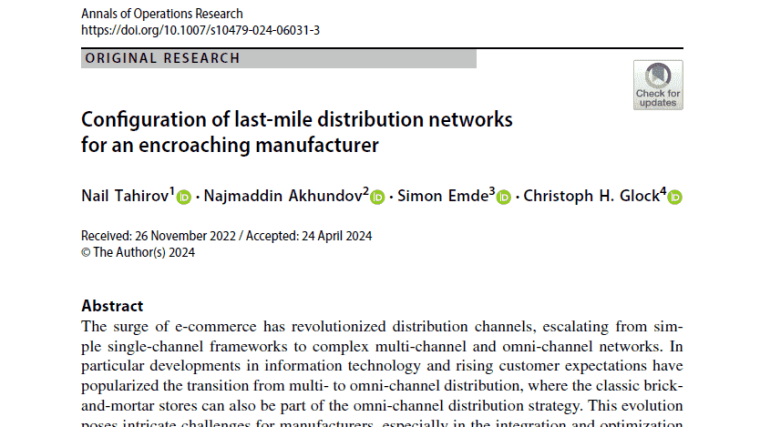
Meldung vom:
The surge of e-commerce has revolutionized distribution channels, escalating from simple
single-channel frameworks to complex multi-channel and omni-channel networks. In
particular developments in information technology and rising customer expectations have
popularized the transition from multi- to omni-channel distribution, where the classic brickand-
mortar stores can also be part of the omni-channel distribution strategy. This evolution
poses intricate challenges for manufacturers, especially in the integration and optimization
of these channels. Thus, there is a strong need for an in-depth analysis of how manufacturers
navigate the transition across diverse distribution channels to meet the varying needs of
different customer segments. To this end, we investigate single-, multi-, and omni-channel
distribution strategies for the case of a manufacturer selling both standard and customized
products to different customer segments with varying preferences. A central contribution
of this research is the creation of an integrated optimization model that resolves a locationrouting
problem, designing a complex and realistic supply chain configuration suitable for an
omni-channel distribution system. This model strategically serves to fragmented customer
demands through multiple shopping and delivery options. The outcomes of our study indicate
that an omni-channel distribution system is a viable approach, capable of serving more
customer segments while simultaneously minimizing logistics costs. In addition, we offer a
detailed analysis of the cost implications of in-store pickup versus home-delivery options,
providing a comprehensive evaluation of their respective impacts on total logistics costs and
customer responsiveness.
Link zum Buchkapitel: https://link.springer.com/article/10.1007/s10479-024-06031-3Externer Link